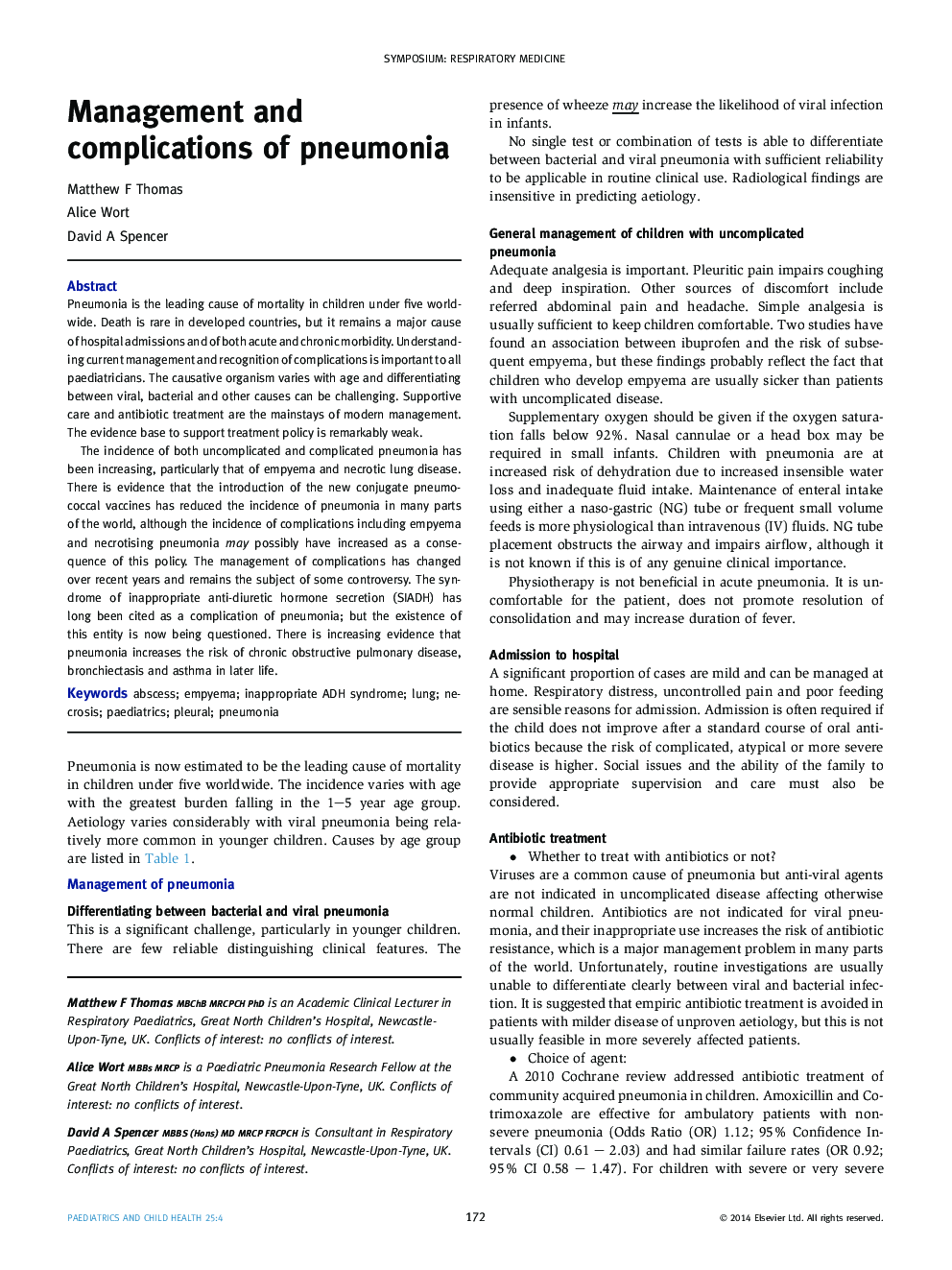| Article ID | Journal | Published Year | Pages | File Type |
|---|---|---|---|---|
| 4172100 | Paediatrics and Child Health | 2015 | 7 Pages |
Pneumonia is the leading cause of mortality in children under five worldwide. Death is rare in developed countries, but it remains a major cause of hospital admissions and of both acute and chronic morbidity. Understanding current management and recognition of complications is important to all paediatricians. The causative organism varies with age and differentiating between viral, bacterial and other causes can be challenging. Supportive care and antibiotic treatment are the mainstays of modern management. The evidence base to support treatment policy is remarkably weak.The incidence of both uncomplicated and complicated pneumonia has been increasing, particularly that of empyema and necrotic lung disease. There is evidence that the introduction of the new conjugate pneumococcal vaccines has reduced the incidence of pneumonia in many parts of the world, although the incidence of complications including empyema and necrotising pneumonia may possibly have increased as a consequence of this policy. The management of complications has changed over recent years and remains the subject of some controversy. The syndrome of inappropriate anti-diuretic hormone secretion (SIADH) has long been cited as a complication of pneumonia; but the existence of this entity is now being questioned. There is increasing evidence that pneumonia increases the risk of chronic obstructive pulmonary disease, bronchiectasis and asthma in later life.
